A conducting bar of mass m and length l moves on two frictionless parallel rails in the presence of a constant uniform magnetic field of magnitude B directed into the page as shown in the figure . The bar is given an initial velocity v0 towards the right at t = 0. Then the

Induced current in the circuit is in the clockwise direction
Velocity of the bar decreases linearly with time
Distance the bar travels before it comes to a complete stop is proportional to R
Power generated across the resistance is proportional to l
The correct Answer is:C
F=iBl ⇒→a=iBlm ...(i)
φ=BA ⇒dφdt=Bldχdt
e = Blv
i=eR=BlvR ...(ii)
By eq. (i) and (ii)
a=(BlvR)Blm=B2l2vRm
a=v⋅dvdχ=B2l2vRm
dv=B2l2Rm∫dχ⇒v=B2l2χRm⇒χ=RmvB2l2⇒χ∝R.
Topper's Solved these Questions
- BOOK - ERRORLESSCHAPTER - ELECTROMAGNETIC INDUCTIONEXERCISE - NCERT BASED QUESTIONS (STATIC EMI)39videos
ELECTROMAGNETIC INDUCTION
- BOOK - ERRORLESSCHAPTER - ELECTROMAGNETIC INDUCTIONEXERCISE - NCERT BASED QUESTIONS (APPLICATION OF EMI (Dynamo, Transformer…))20videos
ELECTROMAGNETIC INDUCTION
- BOOK - ERRORLESSCHAPTER - ELECTROMAGNETIC INDUCTIONEXERCISE - ASSERTION & REASON20videos
ELECTROMAGNETIC INDUCTION
- BOOK - ERRORLESSCHAPTER - CURRENT ELECTRICITYEXERCISE - ASSERTION AND REASON26videos
CURRENT ELECTRICITY
- BOOK - ERRORLESSCHAPTER - ELECTRON, PHOTON, PHOTOELECTRIC EFFECT & X -RAYEXERCISE - ASSERTION & REASON27videos
ELECTRON, PHOTON, PHOTOELECTRIC EFFECT & X -RAY
Similar Questions
A bar of mass m and length l moves on two frictionless parallel rails in the presence of a uniform magnetic field directed into the plane of the paper. The bar is given and initial velocity vi to the right and released. Find the velocity of bar, induced emf across the bar and the current in the circuit as a function of time
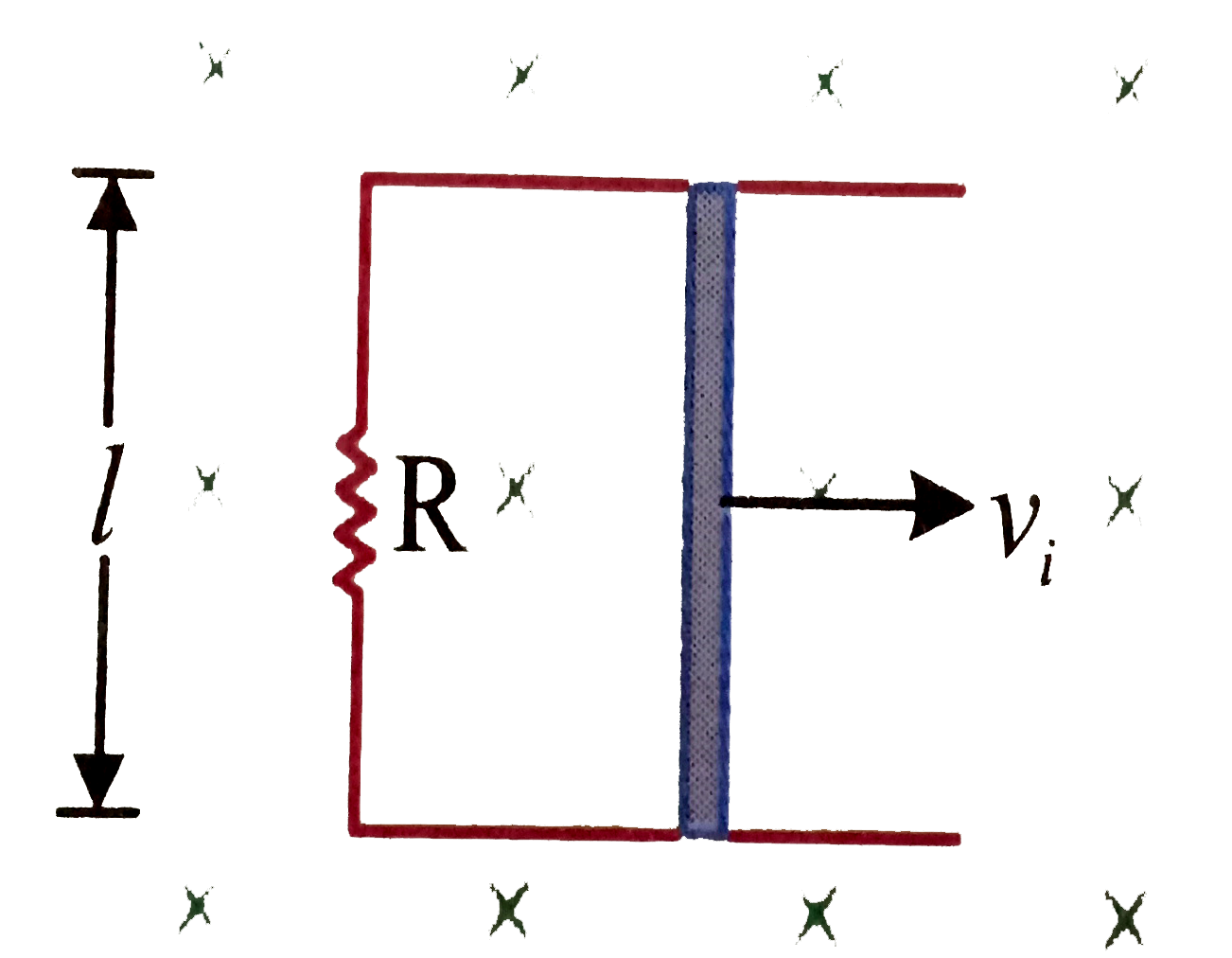 View Solution
View SolutionA conducting rod shown in figure of mass m and length l moves on two frictionless horizontal parallel rails in the presence of a unifom magnetic field directed into the page., The rod is given an initial velocity v0 to the right and is released at t=0. Find s a function of time
a. the volocity of the rod
b. the induced current and
c. the magntitude of the induced emf.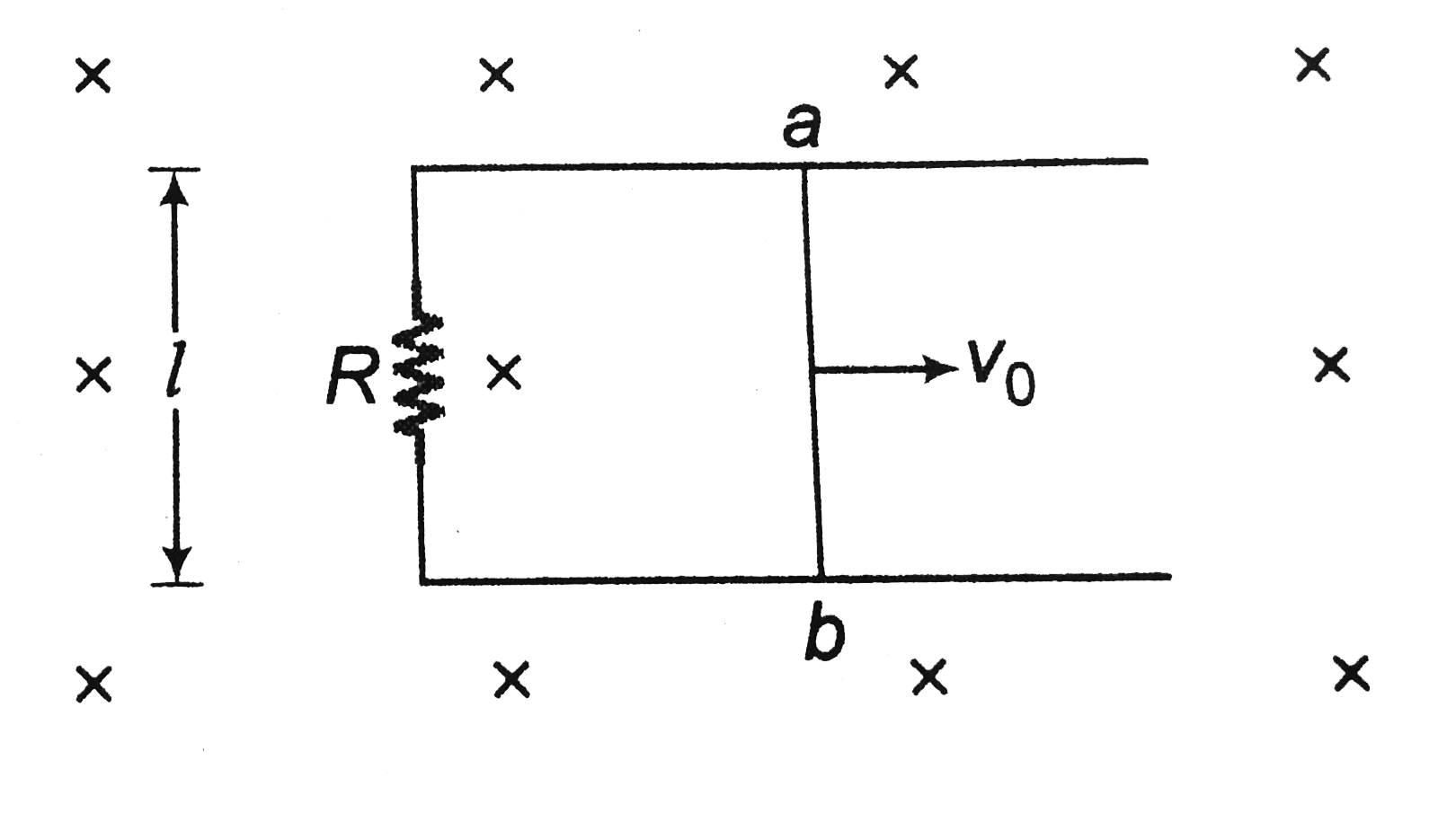 View Solution
View Solution
Knowledge Check
- Question 1 - Select One
A conducting bar mass m and length l moves on two frictionless parallel conducting rails in the presence of a uniform magnetic field B0 directed into the paper. The bar is given an initial velocity v0 to the right and is released at t=0. The velocity of the bar as a function of time is given by
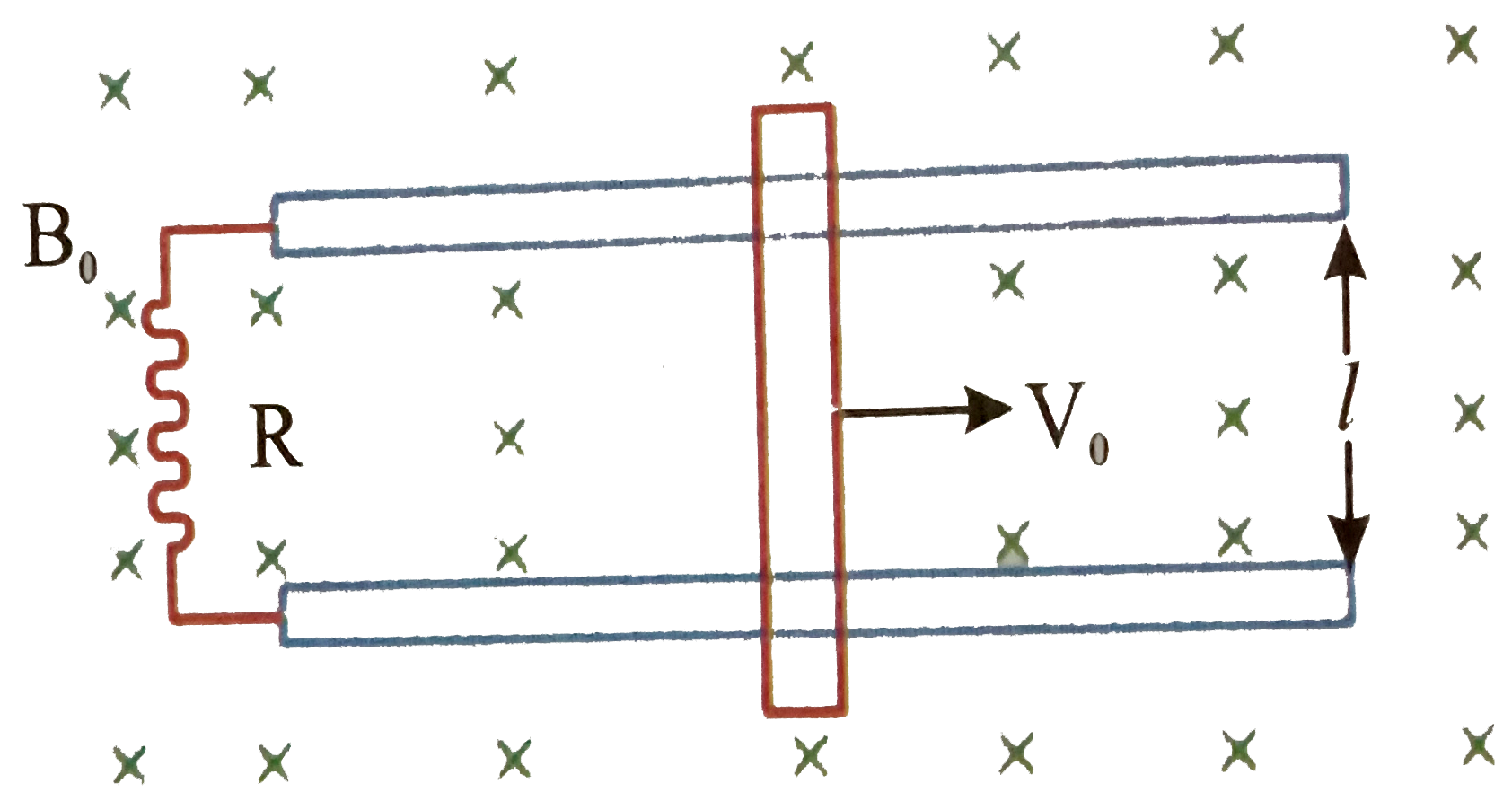 Av0×mRtB20l2Bv0e−B20l2tmRCv0×e−2B20l2tmRDv0e−B20l2t2mR
Av0×mRtB20l2Bv0e−B20l2tmRCv0×e−2B20l2tmRDv0e−B20l2t2mR - Question 2 - Select One
Two idential conductors P and Q are placed on two frictionless rails R and S in a uniform magnetic field directed into the plane. If P is moved in the direction shown in figure with a constant speed, then rod Q
 Awill be attracted towards PBwill be repelled away from PCwill remain stationaryDmay be repelled away orattracted towards P
Awill be attracted towards PBwill be repelled away from PCwill remain stationaryDmay be repelled away orattracted towards P

- Question 3 - Select One
A neutral metal bare moves at a constant velocity v to the right through a region of uniform magnetic field directed out the page, as shown. Therefore,
 Apositive charges accumulate to the left side and negative charges to the right side of the rodBnegative charges accumulate to the left side and positive charges to the right side of the rodCpositive charges accumulate to the top end and negative charges to the bottom end of the rodDnegative charges accumulate to the top end and positive charges to the bottom end of the rod
Apositive charges accumulate to the left side and negative charges to the right side of the rodBnegative charges accumulate to the left side and positive charges to the right side of the rodCpositive charges accumulate to the top end and negative charges to the bottom end of the rodDnegative charges accumulate to the top end and positive charges to the bottom end of the rod
A coducting rod of mass m=0.3kg and length l=4m can slide without friction on two parallel conducting rails. The conducting rails are connected via an inductancce L=3Mh. This system is placed in a region containing uniform magnetic field B=1T pointing into the plane. if the rod is given an initial velocity v0=2m/s, it oscillates with an amplituude Acm. Find the value of 2A
 View Solution
View SolutionA conducting rod of unit length moves with a velocity of 5m/s in a direction perpendicular to its length and perpendicular to a uniform magnetic field of magnitude 0.4T. Find the emf induced between the ends of the stick.
View SolutionA conducting rod PQ of length l=1.0m is moving with a uniform speed v2.0m/s in a uniform magnetic field B=4.0T directed into the paper.
A capacitor of capacity C=10μF is connected as shown in figure. Then
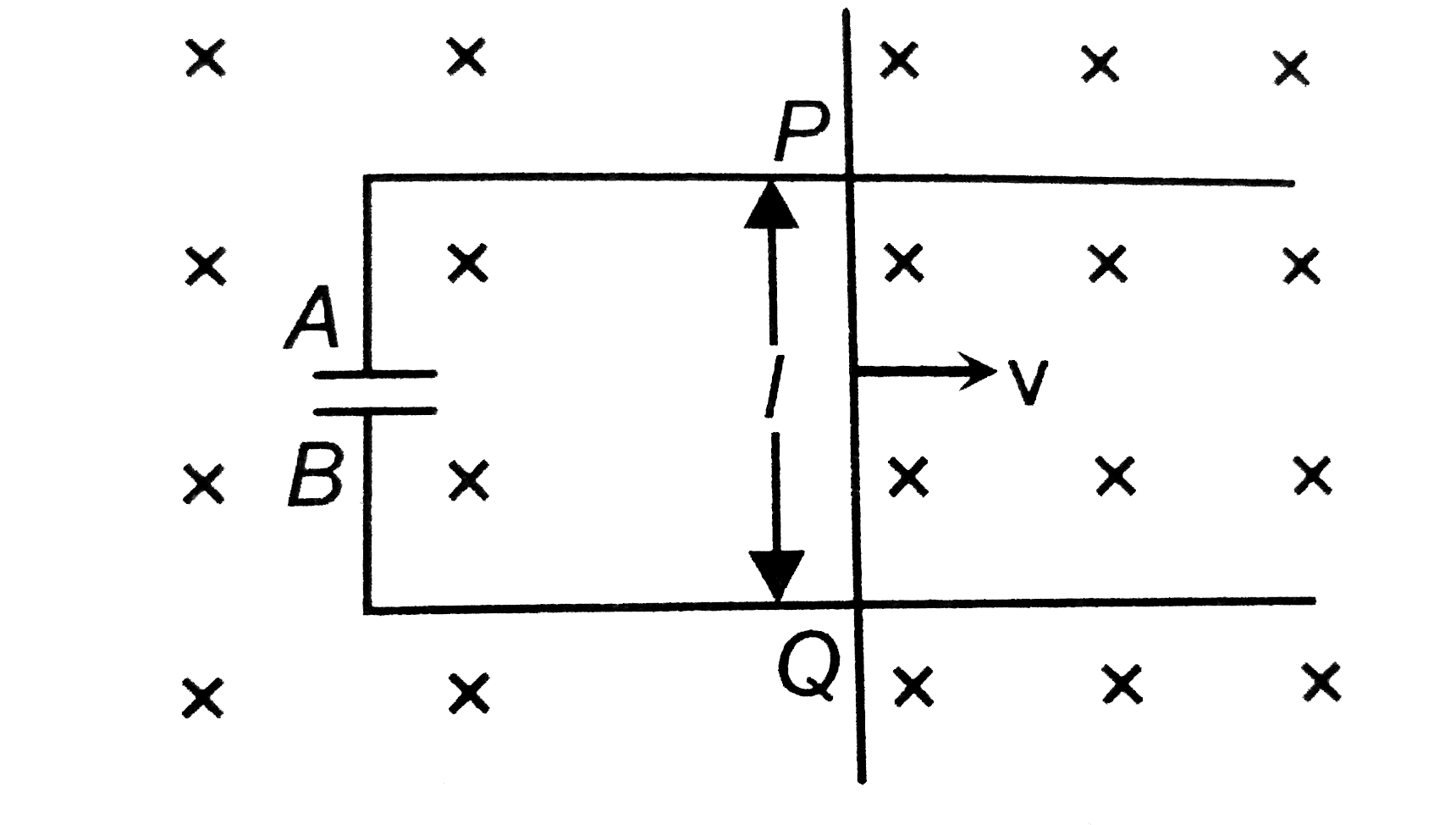 View Solution
View SolutionA conducting movable rod AB lies across the frictionless parallel conducting rails in a uniform magnetic field →B whose magnitude at t=0 is B0. The rod AB is given velocity v right ward and it continues to move with same velocity through out the motion [The acceleration due to gravity is along negative z−axis, i.e. →g=10m/s2(−ˆk), mass of rod =m.] Which of the following graphs will be the best representation of magnitude of magnetic field versus time.
 View Solution
View SolutionA conducting rod of mass m and length l is free to move without friction on two parallel long conducting rails, as shown below. There is a resistance R across the rails. In the entire space around, there is a uniform magnetic field B normal to the plane of the rod and rails. The rod is given an impulsive velocity v0-
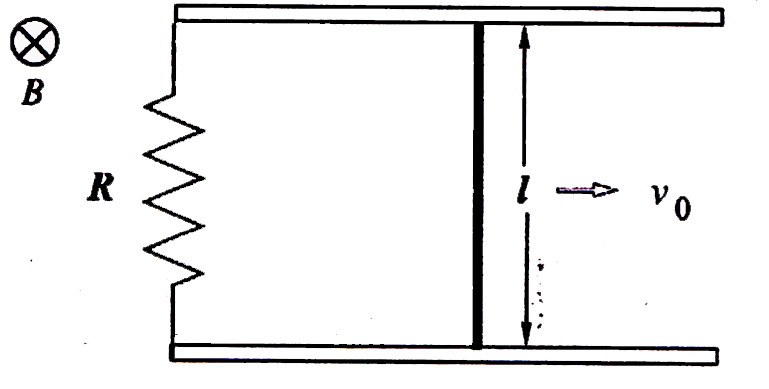
Finally, the initial energy 12mv20View Solution

